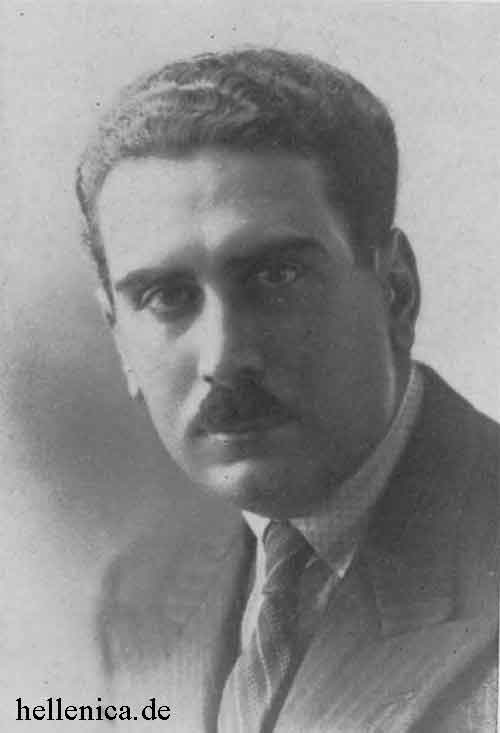.
Spyridon Nikolaou Marinatos (Greek: Σπυρίδων Νικολάου Μαρινᾶτος, November 4, 1901 – October 1, 1974) was one of the premier Greek archaeologists of the 20th century.

Career
Marinatos began his career in Crete as director of the Herakelion Museum in 1929 where he met Sir Arthur Evans. He conducted several excavations on Crete at Dreros, Arkalochori, Vathypetro and Gazi, all of which resulted in spectacular finds. In 1937, he became director of the Antiquities service in Greece for the first time. Shortly afterwards, he became professor at the University of Athens. He turned his attention to the Mycenaeans next, regarding them as the first Greeks. He excavated many Mycenaean sites in the Peloponnese, including an unplundered royal tomb at Routsi, near Pylos. He also dug at Thermopylae and Marathon uncovering the sites where the famous battles had occurred.
The grave of Spyridon Marinatos at the excavation site of Akrotiri on Santorini
His most notable discovery was the site of Akrotiri, a Minoan port city on the island of Thera. The city was destroyed by a massive eruption which buried it under ashes and pumice. The tsunamis created by the eruption destroyed coastal settlements on Crete as well. This event is linked by popular writers and the media to the myth of Atlantis. Guided by the local Nikos Pelekis, Marinatos began excavations in 1967 and died at the site in 1974, after suffering a massive stroke.
Politics
He was director-general of antiquities for the Greek Ministry of Culture during the autocratic rule or Regime of the Colonels. The acquaintance he cultivated with the colonels who were in power in Greece, especially the leader of the military junta from 1967 to 1974, Georgios Papadopoulos, was ideologically based. Marinatos was committed to a vision of a well-ordered patriotic country, which he hoped the regime would build. His political affiliation created controversy among his academic peers. Yet, he was fired by the dictator Ioannides in 1973.
Books
His Crete and Mycenae was originally published in German in 1960.[1] His most important article was about "the volcanic destruction of Minoan Crete" [Antiquity 1939]. His excavations at Thera have been published in six slender volumes (1968-74). "Life and Art in Prehistoric Thera" was one of his last publications in 1972.[2]
His name is mentioned in the video game Indiana Jones and the Fate of Atlantis, which also features a plot involving Thera and the legendary underwater lost city.
Archaeological sites
Marinatos was responsible for excavations at:
Akrotiri (Santorini), Thera
Amnisos
Vathypetro
See also
National Archaeological Museum of Athens
References
^ Kreta und das Mykenische Hellas ( Spyridon Marinatos, 1960.
^ Proceedings of the British Academy, Vol. 57 (1972)
| Ancient Greece
Science, Technology , Medicine , Warfare, , Biographies , Life , Cities/Places/Maps , Arts , Literature , Philosophy ,Olympics, Mythology , History , Images Medieval Greece / Byzantine Empire Science, Technology, Arts, , Warfare , Literature, Biographies, Icons, History Modern Greece Cities, Islands, Regions, Fauna/Flora ,Biographies , History , Warfare, Science/Technology, Literature, Music , Arts , Film/Actors , Sport , Fashion --- |
From Wikipedia, All text is available under the terms of the GNU Free Documentation License

